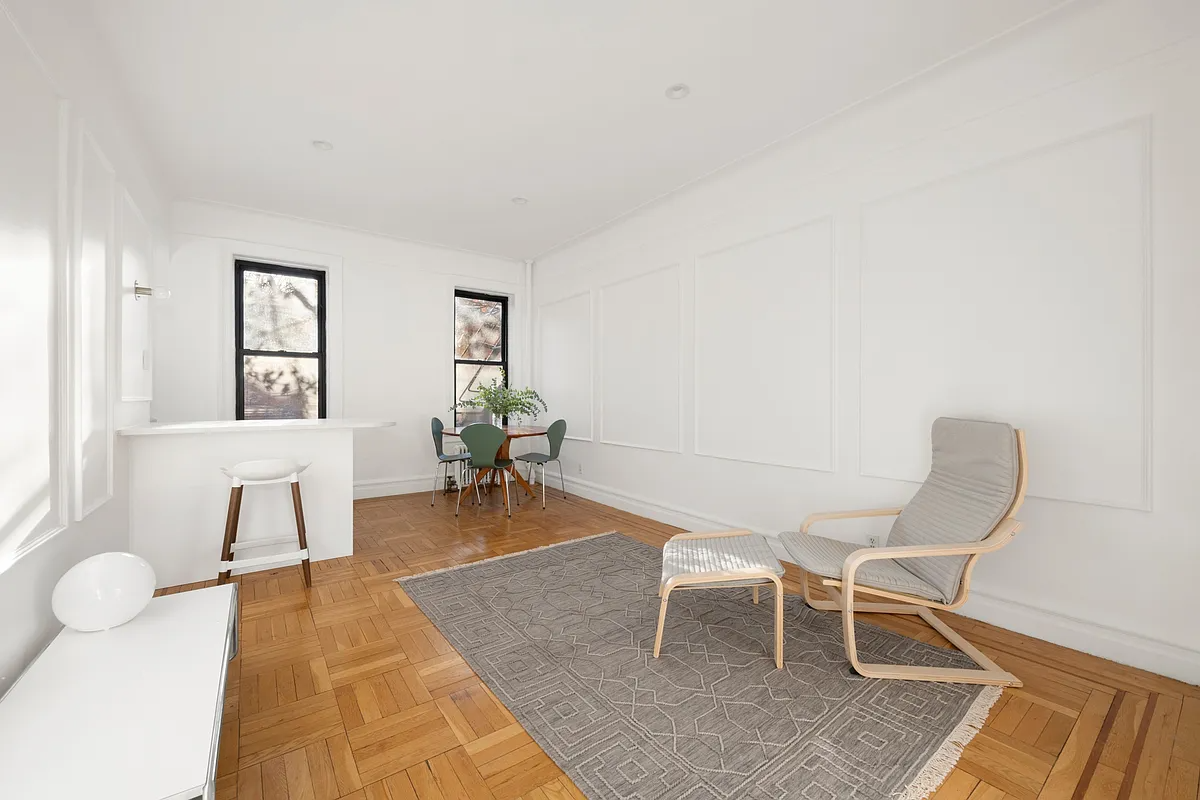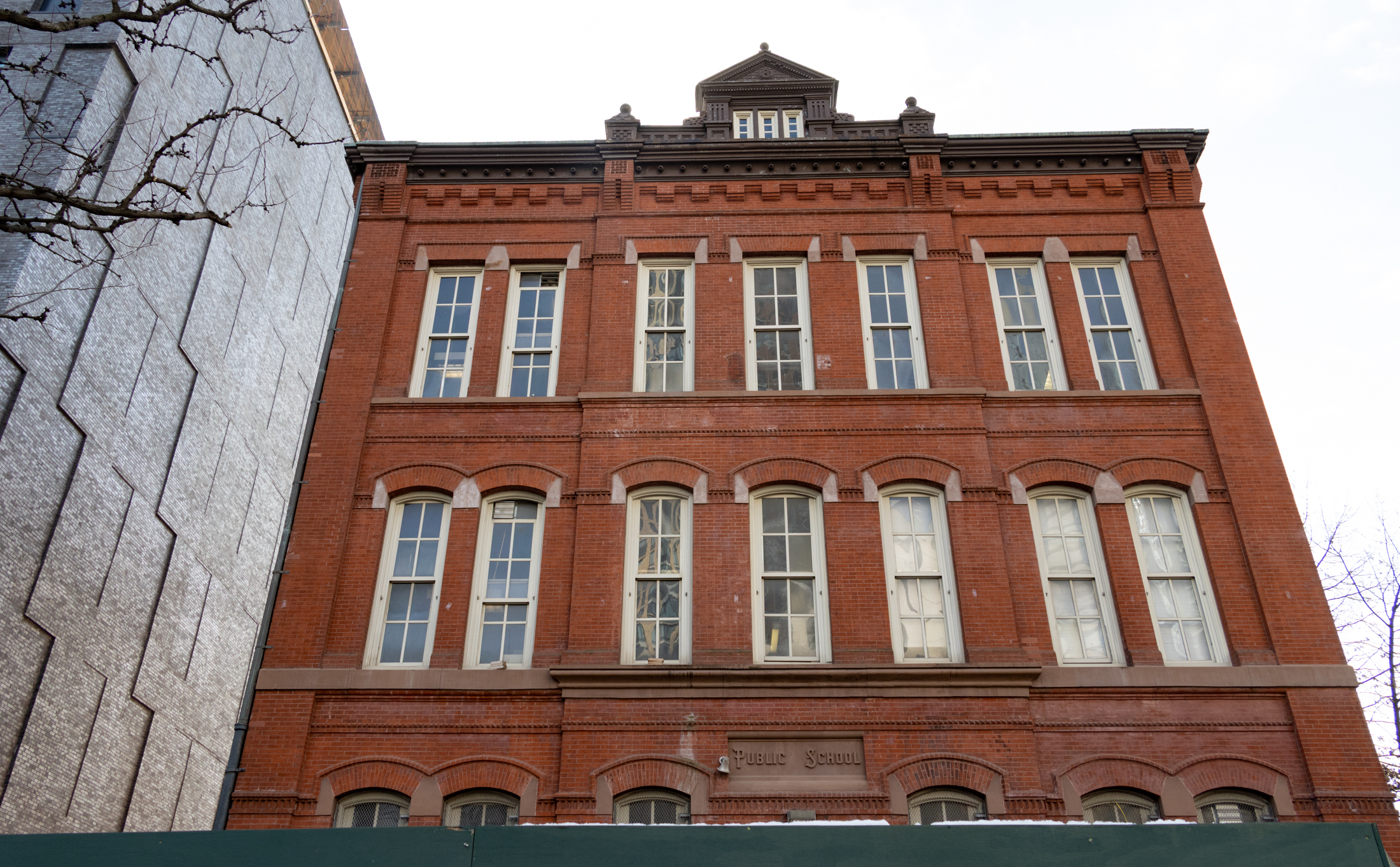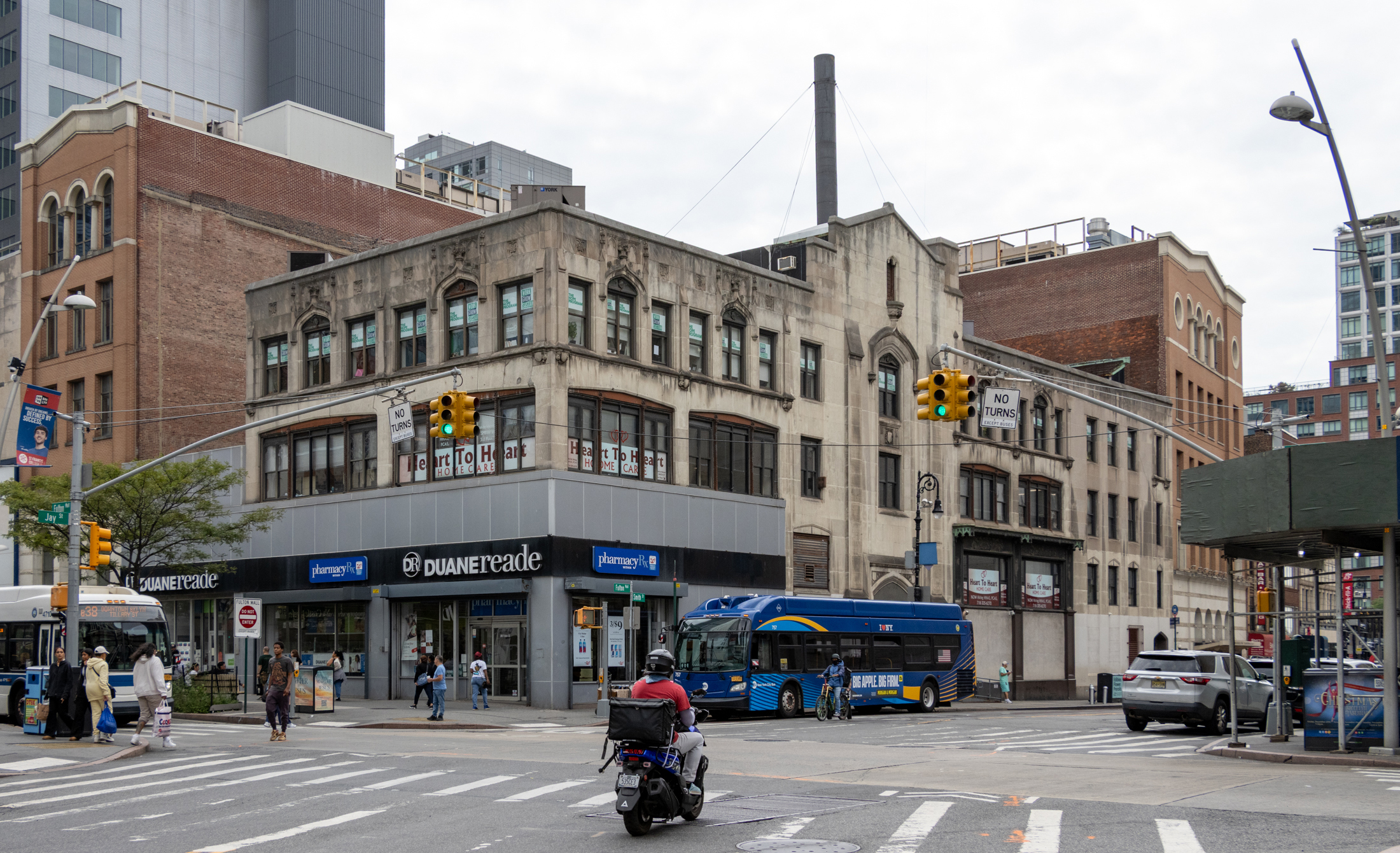House of the Day: 905 Lincoln Place
Here’s a new listing that probably would have been priced $100,000 or $200,000 higher a few months ago. It’s a three-story, two-family limestone at 905 Lincoln Place in Crown Heights. The block is lovely and the house has amazing wood moldings and floors; no word on the bathrooms and kitchens. Anyway, there’s something refreshingly solid…


Here’s a new listing that probably would have been priced $100,000 or $200,000 higher a few months ago. It’s a three-story, two-family limestone at 905 Lincoln Place in Crown Heights. The block is lovely and the house has amazing wood moldings and floors; no word on the bathrooms and kitchens. Anyway, there’s something refreshingly solid about this one: Beautiful but not grandiose house priced at a level that a non-Wall Street family can afford. Think it’ll go for the asking price?
905 Lincoln Place [Corcoran] GMAP P*Shark





Brownstoner:
As soon as I saw the photo of the Crown Heights house on Lincoln Place house (a real charmer, by the way), I knew the fur would fly.
But today’s thread about my old neighborhood seems particularly acrimonious. In response, I’ll offer up some recollections of people who were there in the 1950’s.
I do so because unlike neighborhoods such as Brooklyn Heights, Park Slope, Flatbush, or – even – Brighton Beach, Crown Heights has little known social history, and what’s known (largely the riots of the 60’s and 90’s) overwhelms too many people’s perception of its quality as a place to live.
So here are some people from Crown Heights back in the day. No doubt variations on them can be found in the neighborhood now, helping make people like Montrose Morris passionate about their community, but also making the area worth a deeper look by other Brownstoners.
My Best Friend, F., who lived around the corner in a tenement on Nostrand Avenue and taught me how to hang tough, leaning against stoops, wearing jeans and T-shirts, and dragging on candy cigarettes whose soft packs we rolled into our sleeves (we were eight or nine at the time) while my little brother, in seersucker overalls and a polo shirt, did his best to imitate us, embarrassing the hell out of us.
My Erstwhile Friend L., whom my parents suggested I take sledding in Prospect Park because his parents were going through a divorce and who was so angry with the world that we got into a fist fight in a snow bank on Eastern Parkway, nearly getting ourselves killed by traffic skidding on the ice.
A., the deaf-mute girl who lived in my building and whom we kids teased relentlessly, the memory of which makes me burn with shame to this day.
The Crown Heights Moms, at home during the day because only Crown Heights Dads worked, serving milk and cookies to their kids’ after-school guests, and generally fitting three types: the “traditional†in tailored suits and pearls, the “modern†in full skirts and stiletto heels, and the “progressive†in Indian cotton dresses and dance slippers, all of them smokers and none averse to a cocktail (or two) before their husbands got home.
The Crown Heights Dads, who also generally fit three types: the “traditional†who wore jackets and ties, even on the weekends; the “modern†in multi-color cardigans and slacks that were pressed knife sharp; and the “progressive†in jeans and pullovers, the last usually artists and writers who were more often at home and engaged in the day-to-day-life of their kids (although all CH Dads shared one characteristic: they were reserved, almost aloof, around their kids’ friends, never saying more than a few words, even while driving them to Prospect Park or taking a group on the subway to the Museum of Natural History).
The W’s, among my parents most stylish friends, who lived in an elegant Art Deco apartment house and summered in the Hamptons but before they disappeared each year, piled their kids’ friends into the Suburban (those station wagons with the wood paneling on the side) for a catered picnic in the park.
A.B., a poet and friend of my parents, who lived on Brooklyn Avenue and was in the Ernest Hemingway mold of writers with a big beard and gravely voice – and a 30-foot sailboat in Sheepshead Bay where he’d set out with my dad and me into the Atlantic.
Mrs. A, my first-grade teacher at P.S. 41, whose hair was pulled back in a bun so tight it seemed to stretch her face and who had only to look at a kid to make him sit up straight.
The Twins, the twenty-something sisters who taught at my next school, P.S. 138, lived on my block, and wore tight sweaters and skirts, the day’s feminine ideal (think Monroe, not Paltrow), and whose mere appearance turned us foul-mouthed street kids into awe-struck young gents, courteous to a fault (also because we didn’t want them speaking about us at school, which was sure to get back to our parents).
Dr. G., the family’s elderly G.P. whose degrees were from the Mid West and who had that region’s congenial disposition, an “old school†doctor with a pencil-thin mustache and worn-out physician’s bag he carried on house calls (remember those?), his nurse equally old, with flaming red hair, a cigarette dangling from her mouth, and a voice that made my father call her “The Rasp.†(I’ll hand it to them: they held on to the neighborhood longer than most, moving from their elegant professional suite off St. Marks Avenue to a neighborhood storefront clinic after all their patients moved away.)
The Widow in the Mansion near Our Building, always in the window, never seen coming or going from home, although a big, black Lincoln sat at the end of her drive, watching us play in her yard, never complaining. (Once, my brother recalls, her gardener chased him and his pals with a pair of pruning shears as they scrambled over the fence.)
The Brower Park Matrons, parks department employees dressed in crisp, white uniforms, standing vigilant in front of the girls and boys rooms (especially the girls) which they kept spotless. (Do they have matrons in public playgrounds anymore?)
The Driver on the Bergen Street Bus who’d place his hand over the fare box until each passenger said “good morning†or “good afternoon,†at the time seeming very odd, but now that I look back, likely teaching his riders courtesy and respect as an African American during the rise of the civil rights movement.
The Toy Shop Owner on Nostrand Avenue, whose pink pate and fringe of white hair barely rose above the counter and who must have trusted us kids implicitly because it was impossible for him to see from his register at the back of the shop over the stacks of toys to the front.
The Ladies at Cushman’s Bakery, four or five in a row, almost identical in their hair nets, who could spin twine around boxes of chocolate cake in the bat of an eye.
The Civil Rights Picketers in front of Cushman’s Bakery, protesting the company’s whites-only hiring policies (and making my family, from then on, buy Entemanns’ deserts from Roscoe’s Supermarket on Nostrand Avenue, much to the kids’ disappointment).
The Pizzeria Owner and His Sons at their “brick-oven†shop at the corner of Nostrand and Bergen where I arrived one day desperate for a slice only to find the door locked and a sign with scrawl reading, “Closed due to death in family,†which made me think about death deeply for the very first time.
The Holocaust Victims, whom I never saw and may or may not have been alive but who were an eerie, mythical presence in our apartment, having sent the prior occupants two years’ worth of letters stamped with swastikas, hidden at the back of the uppermost shelf or our pantry, beseeching their American relatives to help them immigrate from Germany, the letters translated by my parents’ friend from Berlin and then dispatched by my mother to a “Jewish institution†for disposal because she didn’t want to upset or embarrass the people who had the apartment before we did.
R., my friend who was actually from Germany, a small, sullen kid who was the first one I knew without a father, enormously shy, afraid of ringing our bell in the lobby, instead waiting on the building’s steps to see if I’d come down, when we’d trade baseball cards and debate Mantle and Maris, my great unasked question for him and his mother: had their family escaped the Nazis, or had they been Nazis?
The Very Proper Brooklyn Ladies Who Lived Next Door, an elderly woman and her mother, who pronounced water “warter†and oil “earl†just like my grandmother, and to whom my mother would bring my brother and me to tea in their looking-glass apartment (the reverse of our own: where there should be French doors there was a wall, where there should be the dining room there was the living room – or “parler†as the ladies called it — and where there should be the foyer’s fire place there was the kitchen door, all somewhat disorienting to a youngster), my brother and I playing with our toy cars and trucks on the floor’s oriental rugs while we listened to our friends playing in the street outside, where we’d much rather be, through the apartment’s open French windows.
The Shoe Repairman, whose shop was at the end of our block, a tiny place not much bigger than his work station, where I liked to visit for the smell of polish and the whir of machines, the repairman never saying much, but in his way, serving as the block’s major domo, watching everybody pass his plate glass window and frequently leaving his shop for a breath of fresh air, built like a fire plug, sitting on a fire plug, watching us kids play, doing what shopkeepers have done since cities first began, taking the sun and monitoring his domain.
Nostalgic on Park Avenue
(BCHM/Back to Crown Heights Movement)
849,000 can buy you a grand home in New Jersey with property, pool, tennis court,
just saying,,,,,but it would not have the social cachet of Crown Heights.
Park Slope! Are you kidding me? Did you see how many muggings occur in Park Slope on that map. That is some scary shit. I’m glad I don’t live in Park Slope.
I can’t believe I’m hearing comments like the one above about Park Slope.
We all hate Park Slope because it is filled with people like you.
if people could afford it, practically everyone on here would want to live in park slope.
that’s why everyone pretends to hate it so much with dumb reasons like strollers and milfs.
as if there are no strollers in other neighborhoods.
ever been to the upper west side??
If the prices in the wealthier neighborhoods were reduced, I wouldn’t be looking to buy in Crown Heights, I’d look in the wealthier neighborhoods….DUH!
6:07 here – all I’m saying is that the majority of the people who live in crown heights are priced out of buying a home in their neighborhood.
Maybe the prices in the wealthier neighborhoods need to be reduced, 6:07.
Then again, you could justify the silly prices of the wealthier neighborhoods, right?
‘We may be on the whole, poorer than many neighborhoods, but we are quintessential New York’
Than the house price needs to reflect the ‘poorer than many neigborhoods’ neighborhood.
The price of this house is not an upgrade for someone living in the neighborhood. It’s targeting those that are outpriced of many others and are tired of renting and want to own.